PowerPoint -
Getting Started with PowerPoint

PowerPoint
Getting Started with PowerPoint


PowerPoint is a presentation program that allows you to create dynamic slide presentations. These presentations can include animation, narration, images, videos, and much more. In this lesson, you'll learn your way around the PowerPoint environment, including the Ribbon, Quick Access Toolbar, and Backstage view.
Watch the video below to learn more about getting started with PowerPoint.
The procedures in this tutorial will work for all recent versions of Microsoft PowerPoint, including PowerPoint 2019, PowerPoint 2016, and Office 365. There may be some slight differences, but for the most part these versions are similar. However, if you're using an earlier version, you may want to refer to one of our other PowerPoint tutorials instead.
When you open PowerPoint for the first time, the Start Screen will appear. From here, you'll be able to create a new presentation, choose a template, and access your recently edited presentations. From the Start Screen, locate and select Blank Presentation to access the PowerPoint interface.
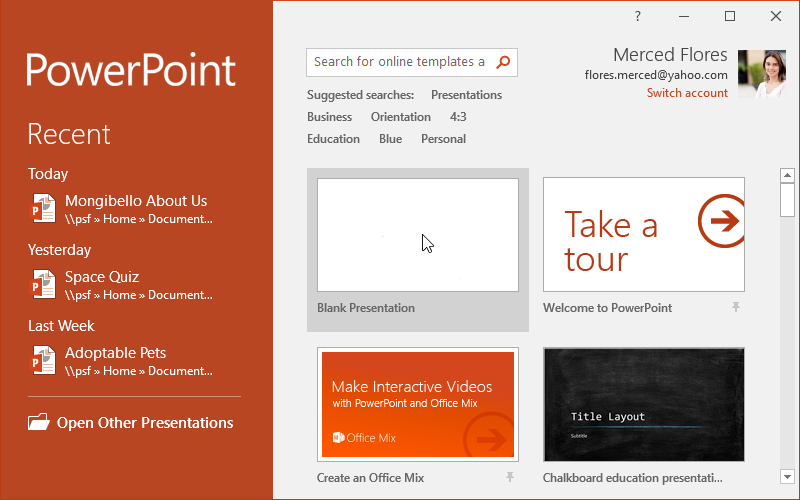
Click the buttons in the interactive below to become familiar with the PowerPoint interface.
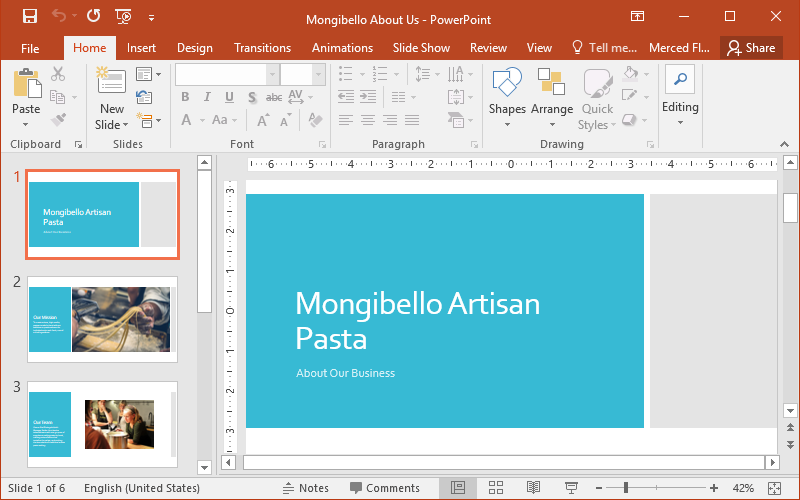
The Ribbon and Quick Access Toolbar are where you will find the commands to perform common tasks in PowerPoint. Backstage view gives you various options for saving, opening a file, printing, and sharing your document.
PowerPoint uses a tabbed Ribbon system instead of traditional menus. The Ribbon contains multiple tabs, each with several groups of commands. For example, the Font group on the Home tab contains commands for formatting text in your document.

Some groups also have a small arrow in the bottom-right corner that you can click for even more options.
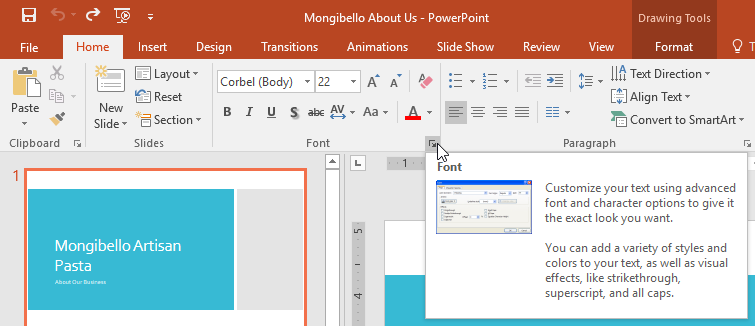
The Ribbon is designed to respond to your current task, but you can choose to minimize it if you find that it takes up too much screen space. Click the Ribbon Display Options arrow in the upper-right corner of the Ribbon to display the drop-down menu.
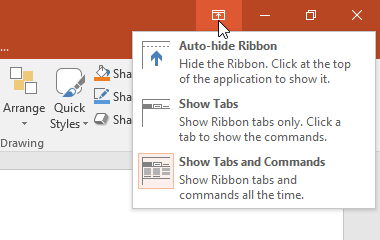
If you're having trouble finding a command you want, the Tell Me feature can help. It works just like a regular search bar: Type what you're looking for, and a list of options will appear. You can then use the command directly from the menu without having to find it on the Ribbon.
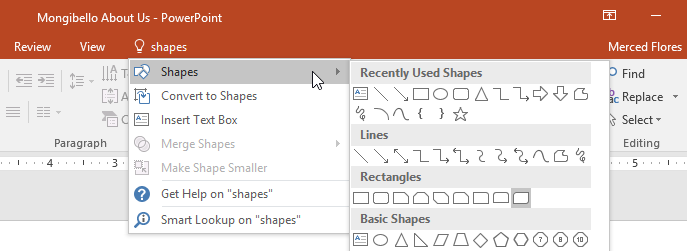
Located just above the Ribbon, the Quick Access Toolbar lets you access common commands no matter which tab is selected. By default, it includes the Save, Undo, Redo, and Start From Beginning commands. You can add other commands depending on your preference.
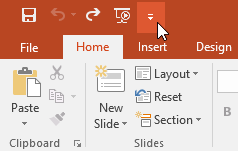
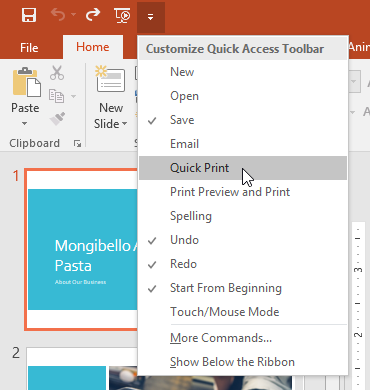
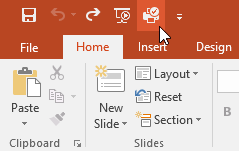
PowerPoint includes several tools to help organize and arrange content on your slides, including the Ruler, guides, and gridlines. These tools make it easier to align objects on your slides. Simply click the checkboxes in the Show group on the View tab to show and hide these tools.
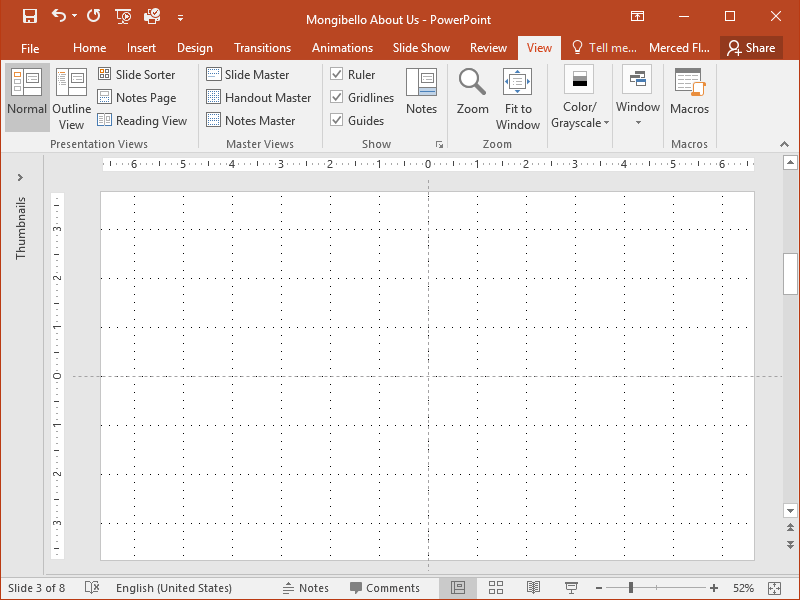
PowerPoint has a variety of viewing options that change how your presentation is displayed. You can choose to view your presentation in Normal view, Slide Sorter view, Reading view, or Slide Show view. You can also zoom in and out to make your presentation easier to read.
Switching between slide views is easy. Just locate and select the desired slide view command in the bottom-right corner of the PowerPoint window.

To learn more about slide views, review our lesson on Managing Slides.
To zoom in or out, click and drag the zoom control slider in the bottom-right corner of the PowerPoint window. You can also select the + or - commands to zoom in or out by smaller increments. The number next to the slider displays the current zoom percentage, also called the zoom level.

Backstage view gives you various options for saving, opening, printing, and sharing your presentations. To access Backstage view, click the File tab on the Ribbon.
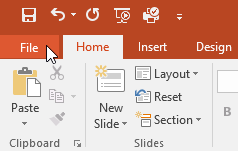
Click the buttons in the interactive below to learn more about using Backstage view.
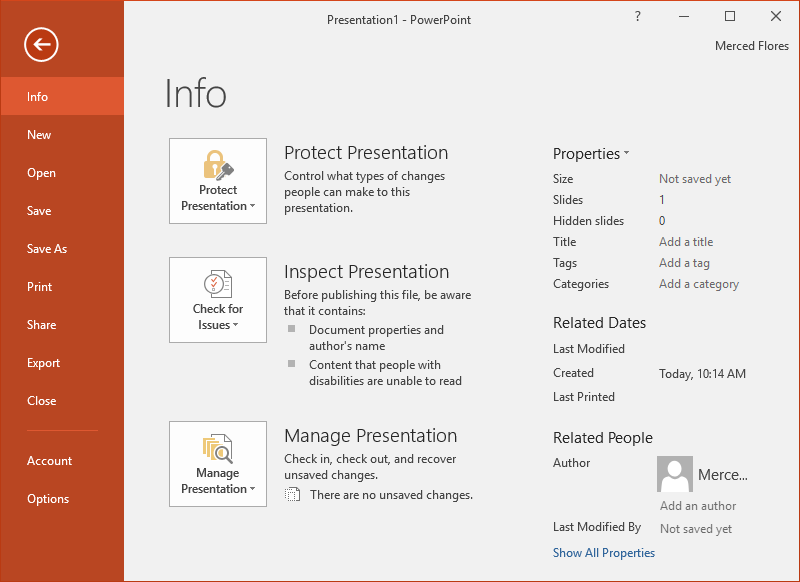
You can review our lesson on Understanding OneDrive to learn more about using OneDrive.
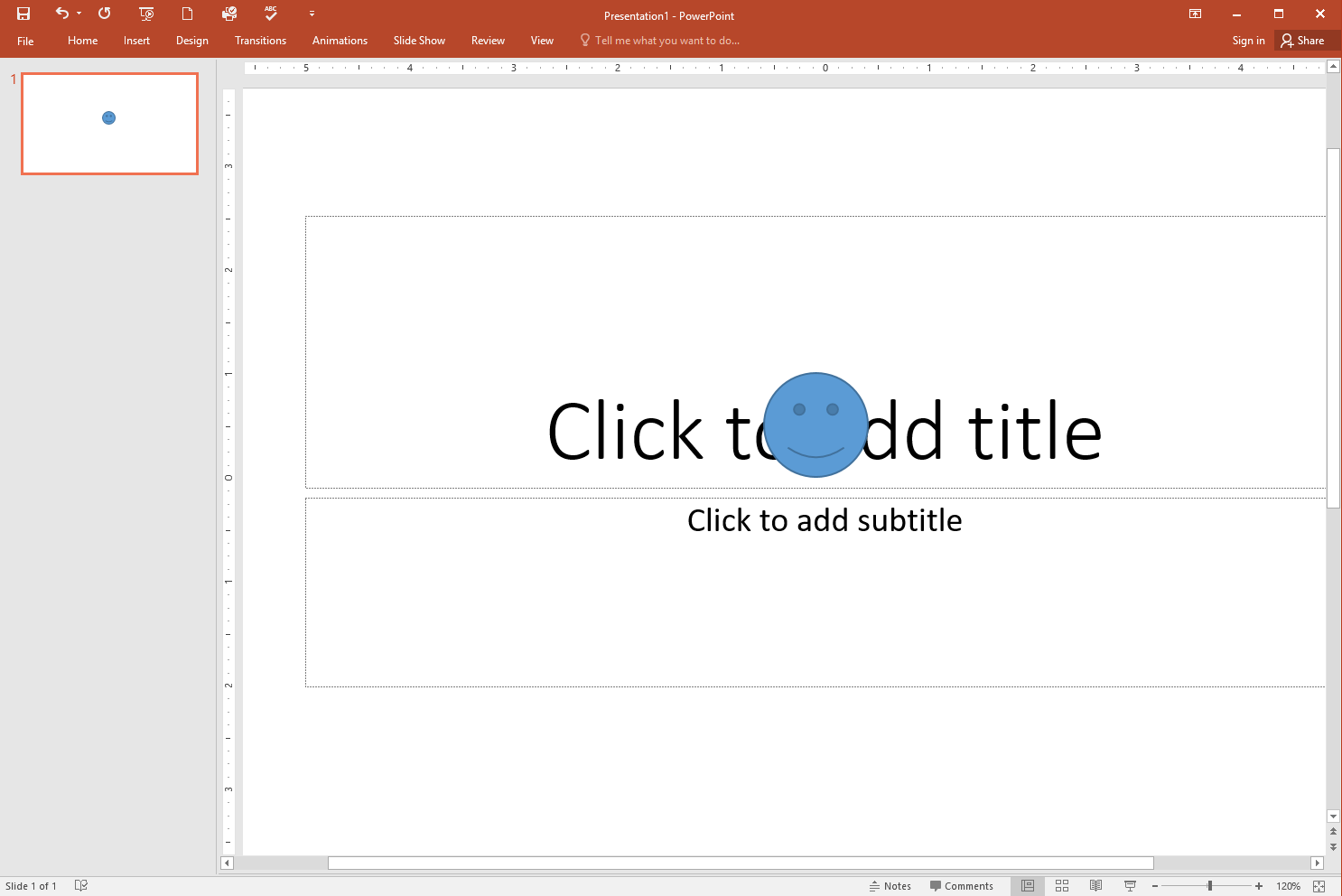
Change the Ribbon Display Options back to Show Tabs and Commands.
/en/powerpoint/understanding-onedrive/content/